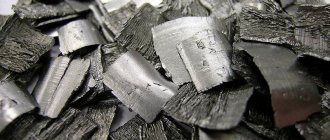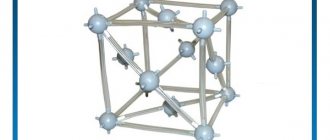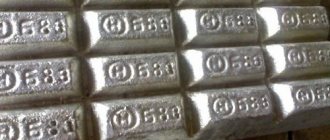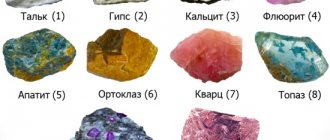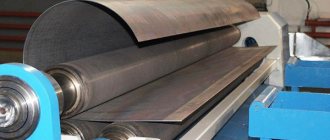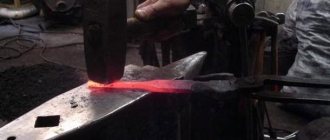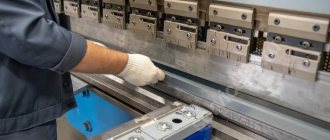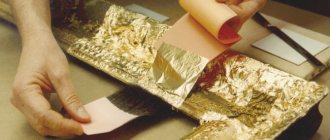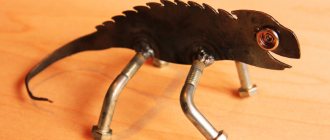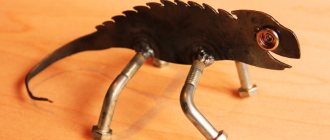Is it necessary to know the thickness of the metal body on a car? After all, the body is one of the most important parts of the car. And all the parts inside can be replaced one way or another.
And any driver will have to tinker with problematic body metal. Therefore, those car enthusiasts who prefer to buy used cars on automobile markets first inspect the body part.
Car underbody repair
The underbody of the car is more susceptible to aggressive environmental influences than other parts of it, and is also susceptible to mechanical damage.
If it is possible to protect the bottom from corrosion, then this is unlikely to be possible from various types of damage. The reason for this is often the unsatisfactory condition of the road surface. In general, sooner or later a car owner will have to face the need to repair the bottom of his iron horse, especially if it has served its owner faithfully for many years. Bottom overcooking - this diagnosis is often given to car owners at service stations. He sounds very serious and these words reek of a hopeless situation and the high cost of resolving it. Is it really? Situations are different, but often things are not as dire as car service specialists make them out to be. If you wish, you can do everything yourself.
How to save money?
If a car owner wants to save money, he needs to do a preliminary inspection of the bottom himself. For this you will need:
- Lift, inspection hole, overpass.
- Good lighting: a flashlight or a carrier with a powerful lamp.
- Hammer.
Using a hammer, it is necessary to tap all suspicious areas of the bottom and determine the extent of their damage in order to approximately know the volume of materials needed.
If all of the above is not at hand or there is simply not enough time for a thorough inspection, then a special mirror for inspecting the underbody of the car will come to the rescue. It will allow you to generally assess the condition of the metal and get an approximate idea of the amount of work. But the situation will become completely clear only after a thorough examination.
The welding process itself is simple; anyone can master it in the shortest possible time. Sometimes it takes longer to connect and set up equipment. The easiest way to overweld the underbody of a car is to use a semi-automatic welding machine. But often such repairs are simply impossible without the use of gas welding. Best of all, when both of these devices are used, they complement each other and improve the quality of underbody repairs.
Recommendations for selection
Anticorrosive is classified depending on:
- application features;
- type;
- chemical composition;
- places of application.
First, you need to remember that anticorrosive agents can be divided into products for internal and external surfaces. It is not recommended to use internal anti-corrosion compounds to treat the underbody of a car. They will not be able to demonstrate the same effectiveness as products specifically designed for the most frequently exposed surfaces. The car owner should decide on the appropriate type of mastic, understand the requirements, and then purchase the most effective composition. There are some good tips on this matter.
There are products that are used for their intended purpose when treating hidden and hard-to-reach surfaces. They are not used for the bottom due to low efficiency and structural features of the substance. Such anti-rust preparations are made on the basis of oils or paraffins. Oily products are characterized by a liquid structure that does not change even after drying. Copes well with microcracks and scratches. And paraffin ones are made from wax. When the drug dries, an elastic film remains. High-quality mixtures do not lose their effectiveness even under conditions of sudden temperature changes. If you need to treat the bottom of the vehicle, the following types of anticorrosives are used:
- Bitumen. Various resins are used in the production of bitumen mastics. The tools are designed to perform two functions simultaneously. To begin with, they help to protect the underbody from mechanical damage. Additionally, there is a metal preservation effect, which has a positive effect on reducing the spread of already formed rust. The better the quality of the bitumen mastic, the greater the protective and preservative effect. When applying, you need to use a layer with a thickness of about 300 - 400 microns. Here you should build on the current state of the bottom, as well as the manufacturer’s recommendations.
- Rubber and polyvinyl chloride. Rubber and PVC are also extremely effective bases for creating anti-corrosion agents. Among all competitors, they are the most durable. But they are used mainly at the stage of factory processing.
- Plastic. There is also an anti-corrosion agent made from liquid plastic. Suitable for domestic use, but in terms of protecting the underbody of the car it does not show its best side. The main problem is low mechanical stability.
The question quite naturally arises as to which anticorrosive agent for cars is the best to effectively resist rust and corrosion.
The answer is not so easy to find, since anti-corrosion agents can indeed differ significantly from each other. But practice clearly shows that when treating the bottom it is better to use bitumen, rubber or PVC compounds. Do not forget about the high importance of quality, since not all manufacturers use the components stated on the packaging. There is no point in saving money here, since a really good anti-corrosion agent cannot be cheap.
Requirements
We are getting closer and closer to which anticorrosive agent is best to choose for your car. For a fairly old vehicle, the condition of the factory protection leaves much to be desired. When choosing an anti-corrosion composition, you need to focus on the maximum effectiveness of the protective layer it creates. In order for the product to work efficiently and prevent rust from spreading further along the bottom of the car, certain requirements must be presented. Namely:
- High quality grip. The material must reliably cling to metal surfaces that are treated with anticorrosive to create effective adhesion. The preparatory stage will play an important role here. Based on the manufacturer’s instructions, the car owner will need to remove all contaminants, clean already rusted areas, and possibly degrease the metal with special compounds.
- Validity. The product should retain its properties for a long period and not have a temporary effect. High-quality anticorrosives are designed for several years of operation without repeated preventive applications. But if you take a dubious product, it may not last even several months on the metal.
- Uniformity. Make sure that the anticorrosive agent is as uniform as possible, thick, and not too liquid. If you see the product starting to peel off, it is better to immediately change the jar from the seller. Stir the product thoroughly before applying.
- Filling cracks, chips and other areas. The motorist cannot carefully treat literally every millimeter of the entire bottom. Therefore, good anticorrosive agents have the ability to effectively fill all cracks and hard-to-reach areas. This does not negate the fact that when processing the metal of a car you need to be careful, careful and try not to miss areas.
- Peeling and cracking. This is what distinguishes low-quality anti-corrosion mastics and products, which become covered with small cracks after a short period of time after application. Or the resulting film begins to peel off. It is possible that this is caused by a violation of processing technology. But if you acted according to the manufacturer's instructions, then you simply had poor-quality protection. Since there are counterfeits of high-quality anticorrosion agents on the market, the possibility of purchasing a counterfeit cannot be ruled out.
- Resistant to high temperatures and flames. All anticorrosive materials must be fire-resistant. Failure to comply with this requirement may lead to dangerous consequences.
- Elasticity and protection from electrolytes and moisture. High-quality anticorrosives, after drying on the bottom, form a durable elastic film, thanks to which dangerous electrolytes and moisture, which are a catalyst for corrosion processes, do not penetrate through the barrier to the metal.
What is needed to repair the bottom?
As the saying goes: “If you want something done well, do it yourself.” Car underbody repair is no exception. To implement this you will need the following equipment:
- Semi-automatic welding machine.
- Gas welding.
- Regular metal scissors or electric.
- Grinder (angle grinder).
- Hammers of various sizes and configurations.
- Good lighting.
You also need to stock up on the following materials:
- Oxygen and calcium carbide (for gas welding).
- Carbon dioxide and copper wire (for a semi-automatic welding machine).
- Wheels for cutting and grinding metal on a grinder.
- Metal for patches.
Basics of arc welding when repairing engine components
Semi-automatic is also the most suitable welding machine for household electric welding of engine elements, but only with the mandatory use of argon. Using argon welding, it is quite possible to weld almost all metals used in a car engine: cast iron, stainless steel, aluminum or ordinary steel. A list of engine parts that can be repaired by welding is presented below:
- Cylinder blocks.
- Valve guides.
- Cylinder heads.
- Intake valves.
- Intake and exhaust manifolds.
- Covers and caps for chambers for adjusting ignition timing.
- Water and oil pumps.
- Pistons and piston pins.
- Valve seats and inserts.
- Pipelines and much more.
The heart of the car
Metal thickness
To repair the underbody of a car with your own hands without any problems, you need to choose metal of optimal thickness.
Its recommended thickness varies from 1 to 2 mm. But here you should take into account the qualifications of the person who will carry out the welding work. When working with thinner metal, you must strictly observe the temperature requirements during welding. Which, in turn, depends on the debugging of equipment and the quality of consumables. Thicker metal is more difficult to process, but it is also more difficult to damage or spoil. Therefore, before purchasing consumables, you need to realistically assess your qualifications as a welder.
What metal is suitable for repair?
To repair the hull, it is important to use those steels that were calculated and laid at the factory. The car body is a load-bearing element and is designed in such a way that:
- Withstand all loads during vehicle operation;
- In the event of an accident, deform in such a way as not to endanger passengers and the driver. For example, so that the hood does not move into the cabin, but is crushed, gradually reducing the impact force in a frontal collision.
It is better to buy ready-made body parts, or cut parts from similar decommissioned cars. The “pro” of using body iron is the fact that the metal already has a protective coating. And often it is of high quality, because it is applied at the factory. But finished parts are expensive, and a car body of a model similar to yours is rarely available for cutting for welding. What to do?
Preparatory stage
Now you can begin the preparatory work. There is nothing complicated about this, and it will not be difficult to do them yourself. You just need to clean all the problem areas of the bottom from rust. This can be done in two ways.
Using a grinder. In this case, it is necessary to use both cutting and grinding wheels. During work, be sure to follow all safety regulations. It is better to clean hard-to-reach places from rust using gas welding.
After the impact of rusty metal and corrosion, the edges of the surface to which the patches will be attached must be thoroughly cleaned. It is advisable to do this work with a grinder. Now you can cut out the metal patches and start welding. It is best to cut metal using manual or electric metal shears. This will allow you to make blanks of exact size and maintain straight edges. Cutting metal, especially thin metal, by welding requires high qualifications.
Car muffler welding
The semi-automatic welding machine is also successfully used for muffler repair. To repair a broken or rotten car muffler, the following actions are recommended:
- Cut a sheet of metal of the required size and apply it to the damaged area.
- Sand the edges of the damaged area and the applied repair material with sandpaper.
- It is necessary to apply the patch to the thickest parts of the muffler - this is done so as not to burn it.
- Select electrodes with a diameter of two mm and adjust the current of the welding machine to them.
- Before performing welding work, be sure to disconnect the battery terminals.
- Welding must be performed with the welding arc separated, moving the electrode from thick metal (patch) to thin metal (muffler material).
- The resulting weld seam should be hammered away from slag and visually checked for the presence/absence of pores in it. If they are not there, then everything is in order and the muffler can continue to be used. If there are pores, you need to boil them and put another seam on top of the first one.
Operating principle and theory of semi-automatic electric welding:
If, after our advice, you still haven’t decided to work on your own, we recommend that you watch video material on the topic, electric welding lessons for beginners.
Welding process
It is advisable to use two people to weld the bottom. It will be difficult for one person to fix the patch and scald it at the same time. If the metal is applied to a flat surface, then it is faster to fix it using a semi-automatic welding machine.
If it is necessary to make a bend, you should resort to gas welding. When heated, the metal becomes soft and can be bent and given the desired configuration using a hammer. It should not be forgotten that high temperature reduces the properties of the metal. Another option in this case could be a special device designed to create bends on metal workpieces.
After completing the welding work, all seams must be cleaned with a grinder and coated with anti-corrosion compounds.
Possibilities for production of body parts
The complexity and, accordingly, the cost of manufacturing body parts from metal largely depends on the “mass production” of the car.
If this is a popular model, the production of which is on stream, the problem is solved as simply as possible and mainly by stamping using already existing master models and dies. Exclusive cars are another matter - rare, vintage ones, the production of which was completed long ago. In this case, specialists sometimes have to restore parts “from scratch” - based on samples and information about these legends of the automotive industry published on websites.
However, the desired result is still achieved. Moreover, we really like to make such body parts to order: manufacturing components for a car without drawings or a design is a complex but very interesting process in the spirit of the programs Top Gear, “Pimp Yourself” and the like.
Car underbody repair without welding
And this option is possible. It is enough to simply periodically inspect the bottom, if necessary, clean the places where rust has appeared and coat them with special compounds.
This method will save time, money and nerves of the car owner. You won’t need to pay huge sums to service station technicians or learn the profession of a welder.
Forget about fines from cameras! An absolutely legal new product - Traffic Police Camera Jammer, hides your license plates from the cameras that are installed in all cities. More details at the link.
- Absolutely legal (Article 12.2);
- Hides from photo and video recording;
- Suitable for all cars;
- Works through the cigarette lighter connector;
- Does not cause interference to radios and cell phones.
Requirements for sheet steel
The main material for a car body is sheet steel. As we already mentioned, it should be as durable as possible. But there are other requirements for this rental. It should be:
- easy to process;
- allowing deformation (for example, when performing industrial bending);
- suitable for welding and painting;
- affordable;
- universal (if replacement is necessary in the future).
For elements that will operate in an aggressive environment with the risk of corrosion, stainless or galvanized material should be selected during the manufacturing of body parts.
Features of repairing and overcooking the underbody of a car with your own hands
Repairing the underbody of a car is not a frequent task, but it is one of the most difficult types of body work that requires qualifications and experience. The bottom, sills, and wheel arches are subject to the greatest destruction from corrosion and mechanical damage.
Operating a car on bad roads, flying gravel, winter use of salt reagents on the streets, incorrect or minimal application of anti-gravel and anti-corrosion protection are the first reasons for the rapid destruction of metal. 70% of drivers are faced with the need to digest sills, change or repair the underbody 5-7 years after purchasing a new car.
Repair tools and materials
In half of the cases, the need for a full underbody repair is discovered by technicians at a service station during routine vehicle diagnostics. When the car is lifted onto an overpass, it is easier for a mechanic to see corrosion plaques on the metal, dents from impacts, etc. The cost of repairs depends on the degree of damage; in a workshop this is a justifiably high price of 10,000 rubles. only for overcooking the thresholds.
But in the case of a body, the degree of damage to the metal may be excessive and it will not be necessary to repair the bottom with patches, but to completely or partially replace the load-bearing elements. Many drivers choose garage repairs; it is 10-15 times cheaper; if the technician has skills in gas or electric welding, the cost of the work is minimal.
Before welding the underbody of a car with your own hands, you need to prepare the following tools and materials:
- calcium carbide, oxygen cylinder if gas welding is used;
- copper wire, carbon dioxide, if welding is performed semi-automatically;
- metal for patches;
- replacement wheels for a grinding machine;
- bitumen mastic, paraffin anticorrosive for treating the external and internal surface of the bottom;
- putty.
Equipment and tools that will be required for repairs:
- grinder (angle grinder);
- chisel with a wide blade;
- welding machine;
- metal scissors;
- straightening hammers;
- electric drill.
During the work, you may need a degreaser, a spot welding machine for tack, and R-80 sandpaper.
What does a beginner need to start welding work on a body?
ATTENTION! This note outlines one of the many options available to beginners when starting welding work on a car body. This option is based on the author’s experience and is intended to demonstrate the solution to two main problems facing a beginner: 1) what equipment and equipment to purchase in order to complete the work and not spend too much money. 2) how to perform welding work.
SPECIAL ATTENTION! This note describes what the author himself uses (that is, I personally). Anyone who tries to accuse me of advertising - go... past!
Part 1. Equipment and equipment.
The minimum set of equipment will be: 1) A grinder with a circle diameter of 115 mm and a power of 300 - 450 Watt. It’s not worth taking a larger one, because... It will not be convenient to make cuts in local areas of the body. The circles for it have a thickness of 1 (for most panels) and 2 mm (for spars). Round brush. Cleaning disk (shaped) 5-6 mm thick (for grinding off excess welding. 2) Attachment for an angle grinder such as a belt grinder (file) for cleaning/grinding in narrow places
, and tapes for it. 3) Aurora Overman 160 or 180 welding machine and a spool of self-shielded flux-cored wire E71T-GS.
And drills for spot welding. You can read how to make these yourself from metal drills HERE 5) Hand tools: bench hammer, chisel, set of metal drills, hand brush with metal bristles. 6) Set of straightening tools for rough work
Respirator with filter elements
9) Welding clamps (pliers)
Questions to answer from the list above.
Question: Why Aurora Overman 160 or 180 welding machine?
Answer: This is one of the few devices of professional quality and purpose, available at budget prices, i.e.
up to 30,000 rub. The device is simple to use, reliable, and does not require welder experience. Allows you to adapt to different tasks.
Q: Why E71T-GS self shielding cored wire? Answer: Self-shielding flux cored wire is essentially very similar to a consumable coated electrode, only the compound that generates the shielding gas around the arc is placed inside the wire. This wire can be used for welding under the same conditions as with a consumable coated electrode, i.e. even in the open air and in light winds. A gas cylinder, a gas reducer with a pressure gauge and flow meter, and a CO2 heater are not needed. This saves about 15,000 rubles
. But such wire smokes, and the welding site becomes covered with slag, which needs to be cleaned. 3) IMPORTANT! a) Welding must be carried out with straight polarity, i.e. “-“ must be connected to the burner. This mode provides maximum heat input into the body panel material, which allows welding at lower currents and in a more gentle (in the metal annealing zone) mode. b) Welding must be performed at an angle backwards, pushing the slag to the tail of the pool. Otherwise, slag will get into the weld pool, and the seam will turn out porous!
Universal self-shielding wire for body work - E71T-GS 0.8 mm thick. This wire is intended for welding low-carbon and low-alloy steels, which means that the strength of the weld material is higher than that of body panel steel, and is close to the strength of steel side members and other body elements made of low-alloy steels. Example: ESAB CORESHIELD 15 Don't skimp on wire quality! One reel of 5 kg. will allow you not only to master the welding process, but also to carry out repair work on about 50% of the body of a class C car, including a station wagon. An advantage will be the elimination of the influence of wire quality on the welding process, which will allow for faster mastery of the process.
Part 2. Training to work with a semi-automatic welding machine Aurora Overman 160 or 180 At the very beginning, watch the following videos (and don’t listen to the advisers who say that the middle knob on the Overman regulates the current strength!):
To practice, find pieces of metal 0.8 - 1 mm thick and try welding at the butt, through a cut-out hole, overlapping, experimenting (within small limits) with the settings. Before welding, the metal must be cleaned to a shine of paint and zinc coatings, grease, dirt and rust. Use a round grinder brush. E71T-GS wire tolerates small traces of rust or zinc coating easily. It is better to cook thin metal in spots with a step of 2.5 cm, with a cooling interval of several minutes before the next pass. With each new pass, the points are placed centrally between the previously marked points. After each pass, clean the points and spaces between them with a brush until shiny! What should be the result? 1. The sound of welding should be heard as a uniform hissing/buzzing sound. 2. The welding seam should be round and slightly convex, no more than 3 - 5 mm wide, covered with an even thin layer of slag/carbon deposits, and should not have pores/craters/holes. 3. When butt welding, the seam bead should be on both sides (thinner and less convex on the reverse side).
4. When butt welding and through a cut hole on the reverse side, the penetration of the metal should be clearly visible (a thin line of the back seam, or a bump for spot welding). 5. Welded parts should not separate easily when bending along a seam or moving parts apart after spot welding or overlapping. The metal rupture should occur along the edge of the seam (point), but not along the seam itself
.
Good luck, and don't be afraid to get started! But you shouldn’t rush straight into a car with a tool, without training.

